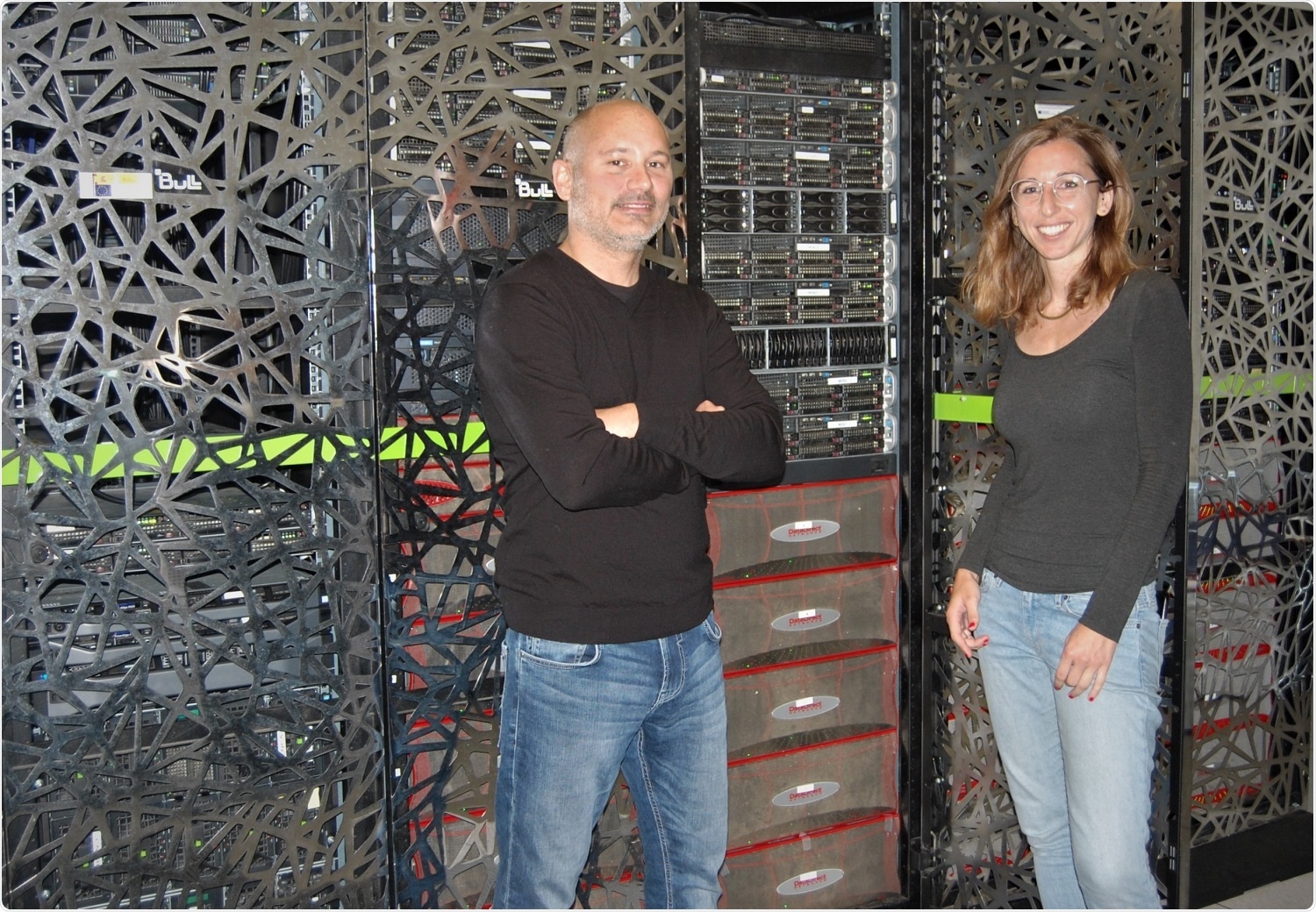Experts in rare diseases have recently described the initial results of a collaboration to diagnose individuals living with unsolved cases of rare disorders throughout Europe. The study results were recently published in a series of six articles that appeared in the European Journal of Human Genetics.
Sergi Beltran and Leslie Matalonga are pictured in front of the dedicated servers hosting the RD-Connect GPAP platform, which manages over 500TB of sequencing data. The platform is located at the CNAG-CRG facilities in the Parc Cientific de Barcelona. Image Credit: Centro Nacional de Análisis Genómico (CNAG-CRG).
A global consortium, called Solve-RD, has explained in the main publication that the periodic reanalysis of phenotypic and genomic data from individuals living with a rare disorder can increase the chance of diagnosis when it is integrated with data sharing across the European borders on a large scale.
Through this new method, an initial reanalysis of data collected from 8,393 people led to 255 new diagnoses, and a few individuals among this group had atypical manifestations of familiar diseases.
A complementary analysis explains the new technique more thoroughly and four accompanying case studies highlight the benefits of the new approach. In one specific case study, scientists applied the technique to detect a new genetic type of pontocerebellar hypoplasia type 1 (PCH1)—a genetic disease that impacts brain development.
PCH1 is usually associated with mutations in four familiar genes. The new method was used by the researchers to detect a new variant in a fifth gene.
In yet another case study, the team used the new technique on a person suffering from a complex neurodevelopmental disease and discovered that this disorder was induced by a novel genetic variant in mitochondrial DNA. But this medical condition was not detected before because the patient did not exhibit the characteristic symptoms of a mitochondrial disorder.
Such a diagnosis will not only help customize treatment for the individual but would also help inform the patient’s family members on the viability of passing it on to upcoming generations.
The RD-Connect Genome-Phenome Analysis Platform (RD-Connect GPAP) is crucial to the reanalysis of unsolved cases of rare diseases. This platform has been developed, coordinated, and hosted by the Centro Nacional de Análisis Genómico (CNAG-CRG), which is part of the Centre for Genomic Regulation (CRG), situated in Barcelona.
The RD-Connect GPAP, which is officially known by the International Rare Diseases Research Consortium and financially supported by the EU, Catalan, and Spanish governments, offers authorized researchers and clinicians controlled and secure access to pseudonymized clinical and genomic data from patients suffering from rare disorders.
Through this platform, scores of undiagnosed patients and relatives who enter the Solve-RD project can be automatically re-analyzed in a fast, secure, and low-cost manner.
Solve-RD has shown that it is possible to securely share large amounts of genomics data internationally for the benefit of the patients. The work we are publishing today is just the tip of the iceberg, since many more patients are being diagnosed thanks to the innovative methods developed and applied within Solve-RD.”
Sergi Beltran, Head of Bioinformatics Unit, Centro Nacional de Analisis Genomico
Beltran is also the co-leader of Solve-RD data analysis.
In Europe, 30 million people are estimated to be impacted by a rare disorder during their lifetime and over 70% of rare diseases were found to have a genetic cause. But despite this fact, about 50% of patients with a rare disorder continue to remain undiagnosed even in sophisticated expert clinical settings where methods, like genome sequencing, are normally used.
Globally, scientists are also identifying an average of 9,200 variant-disease associations and 250 new gene-disease associations every year. With the expansion of scientific understanding, periodic reanalysis of data can help patients receive a diagnosis.
The international consortium, which includes over 300 clinicians and scientists in 15 nations, and who collectively come across more than 270,000 cases of rare diseases every year, has planned to ultimately diagnose over 19,000 unsolved cases of rare disorders with an unfamiliar molecular cause.
The researchers’ initial results represent a significant first step toward the development of a European-wide system to enable the diagnosis of rare disorders, which can be an arduous and long procedure.
Source:
Journal reference:
Matalonga, L., et al. (2021) Solving patients with rare diseases through programmatic reanalysis of genome-phenome data. European Journal of Human Genetics. doi.org/10.1038/s41431-021-00852-7.